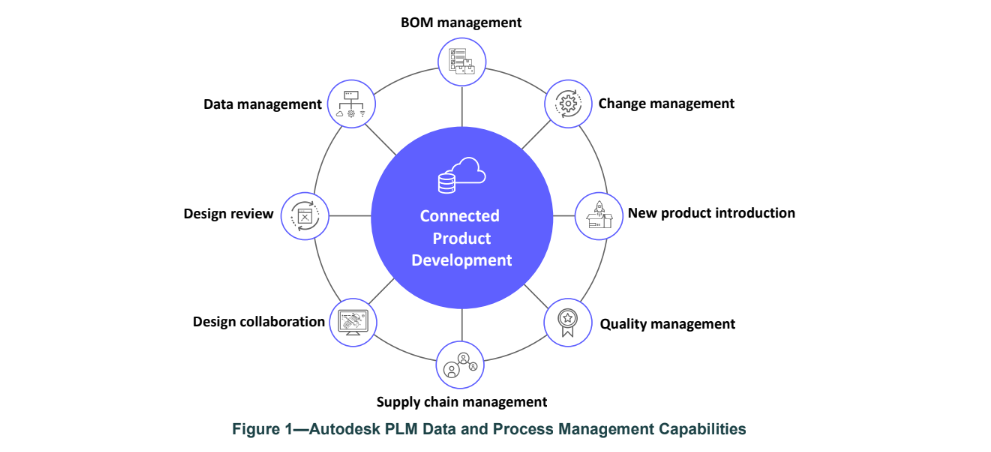The value of efficiency in industrial manufacturing cannot be understated. And in the modern world, there are countless tools that help increase efficiency. Workers are able to automate tasks that used to eat into their time, allowing them to focus on more impactful priorities and think forward.
The numbers back it up, too. According to the Harvard Business Review, a recent survey reported that almost 80% of employees believe that automation has given them more time to “deepen relationships with customers and other stakeholders, take on challenging new projects, and learn new skills.”
In other words, there’s a lot engineers can get done if they’re not forced to waste time on busywork.
But automation now is different than it was a year ago, and automation next year will be different than it is today. This is because technology improves, customer expectations shift, and trends evolve. And successful manufacturers understand these realities – and they take the concept further to expand the value of efficiency.
Automation doesn’t just help with achieving the tasks at hand more quickly. It fosters healthy operations between different teams and engineers, while harnessing the power of connectivity to drive innovation.
The Overwhelming Information Challenges in Modern Product Engineering
Over the last 20 years, engineering has accelerated its move from pencil and paper to AutoCAD®, and from there to parametric mechanical design tools like Autodesk® Inventor®. Design happens digitally now, and the walls of filing cabinets are a thing of the past.
But that doesn’t mean there’s less data or documents. And in fact, the digital world creates more. In the current industrial manufacturing world, engineers must focus on their immediate tasks – yet they also face the daunting task of managing this abundance of product data and documents.
Then, to make the matter even more complex, their work naturally creates more data and documents that the rest of the company has to shift through. Here are a few more examples of product data trends in recent years:
- Digital Transformation: Product engineering has moved from traditional pencil and paper methods to digital tools like Autodesk Inventor, dramatically streamlining design processes.
- Data Overload: The digital era has increased the amount of information to manage. Engineers now navigate a digital space of extensive data on top of their other priorities.
- Data Generation: Engineering work inherently generates more data and documents, adding a challenge to data management for different teams that interact with engineers in the manufacturing workforce.
The Importance of Data & Document Management in Breaking Down Connected Product Development Siloes
How can manufacturers successfully manage their workflows to ensure their workers aren’t trapped in silos? Quality engineering is rooted in the ability to navigate these high volumes of information and successful document management best practices. Further, this approach breeds an environment focused on connected product development.
Interested in leveling up your engineering document management processes? Check out this infographic for 5 proven best practices!
One of the most significant hurdles engineers face is transferring data from their design domain to the rest of the organization. Let’s say a company has 200 employees and five engineers. Those five must feed the rest of the organization's essential information. But if silos exist, it causes errors, inconsistencies, and inefficiencies!
Engineers need a way to bridge the gap. And unlike standalone Word documents or Excel sheets, engineering software is incredibly complex – with multiple components linked to a single design. If a change is made, and you don’t know what’s all linked in, that’s a recipe for disaster. A lack of proper electronic management causes friction and potentially tedious and annoying ripple effects.
To help with these obstacles, engineers utilize CAD software with automation features – but that only goes so far. Engineers often struggle to automate the workflows between design and manufacturing. But what if there was a way to connect CAD software and ERP systems at the start of a project?
That’s what our team at Hagerman does. We improve communication so the right products are made with the correct materials.
No More Silos: Build a Foundation of Connected ERP Systems and CAD Software for Connected Product Development
A major variable engineers deal with is the reality that situations are constantly evolving. ERP systems change. New engineers enter the fray. Product lines shift. It’s a perpetual cycle of refinement, adaptation, and optimization.
At Hagerman, we advocate for building a solid foundation within your company that encompasses auditing, engineering, and document management. At the same time, your ERP and other systems must align with this foundation.
These two realms often operate independently, and our expertise lies in building a bridge that links them. Our goal is to showcase the full scope of capabilities through our audits and gathering information about your organization and approach.

Optimizing the flow of data from engineering to production is the key to improving efficiency. By utilizing tools like Autodesk Vault or Inventor, engineers eliminate manual data entry and minimize errors when transferring critical information from design to production. It’s essential to bridge the gap in understanding how engineering and ERP systems understand data – and by streamlining them, overall efficiency can be enhanced.
The irony is that many organizations already possess the necessary tools – but don’t know how to properly wield them. For example, are you fully tapping the potential of Autodesk Vault or Inventor?
“For many engineers, they just need to start somewhere to connect their systems. If there's ‘if then’ logic in their product workflows, then we can automate it. If you’re walking off the beaten path, you’re going to need a hatchet to get back on the path. But it’s worth it.”
– Ken Christensen, Sales Manager at Hagerman
Thinking Forward: How to Do More With Less
With manufacturers under increasing pressure to perform at a higher level of efficiency than large companies to be competitive, it all comes down to modernization. Automation is both the present and future of manufacturing – and it’s not much more complicated than that.
However, many engineers utilize this modern technology, but many aren’t tapping into its full potential.
Leveraging connected product development processes can be a fundamental shift in how engineers approach their work. Breaking silos ensures that the right information flows to the right people at the right time. Many successful engineers understand the value of streamlining their workflows, and are well ahead of the game when it comes to embracing new technology.
Are you ready to catch up and connect your people, processes, and data with Autodesk PLM? Check out this quick guide that covers the benefits of Autodesk PLM.




Comments